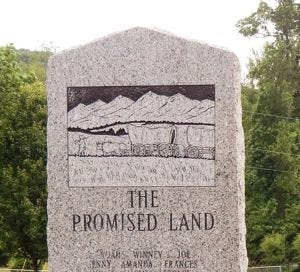[Introduction: In 1964 on the verge of the Civil Rights Movement, a lawyer learned about a group of people who had lived in Burlington, Ohio for generations. These people owned their land and they were all the descendants of slaves from Virginia. How did a class of property owners arise from slavery? The lawyer was curious and the more he researched, the more incredible was the story. The lawyer had stumbled upon an American story of Black enterprise in the heartland. This is a story of America.]
THE PROMISED LAND by J. Earl Pratt
“When James Twyman, wealthy Virginia plantation owner, died in 1849, his slaves, thirty-seven in number, were by the terms of his will, freed and given a fresh start in a new territory. Where they went and what they did with their freedom is told in this brief, significant story.
Twyman died unware that the stirrings of friction between North and South over the slavery question would explode, within a short span of years, into the holocaust of Civil War.
A considerate master, he was considerate even in death. His slaves were to be given transportation to a free state, to receive homes and lands, provisions and clothing for a year, and all useful tools to work the land.
And so, by wagon train, the group crossed the Blue Ridge Mountains and journeyed 400 miles to Lawrence County, Ohio, to new homes near the site of present Burlington. Their first move was to acquire surnames — in the old life they had none. And, as the years passed, James Twyman’s former slaves, living at peace with their neighbors, repaid his generosity by becoming upstanding, productive citizens — in medicine, in education, in the business field.
Says the author: ‘You do not hear of any of the descendants of James Twyman’s slaves complaining about discrimination. They are able to stand up among white men and women anywhere and compete with them on equal terms.’
In this day of racial tension, Mr. Pratt believes, the story of James Twyman and his slaves bears witness to the fact that the way to settle differences between the races is by voluntary action on the part of both.
The American Negro, he feels, should ‘quit crying “Foul!”’ at every instance of discrimination and attempt to raise himself to such a level culturally, materially and spiritually as to prove himself the equal of the white man…as did the Twyman slaves’ descendants. ‘He should work and strive so hard that the white man will begin to worry about his own status in comparison.’” — The Promised Land by J. Earl Pratt (1964)
The Burlington 37 The Burlington 37 The Burlington 37
A Landmark for the Burlington 37 Manumitted by James Twyman (1781 - 1849)




